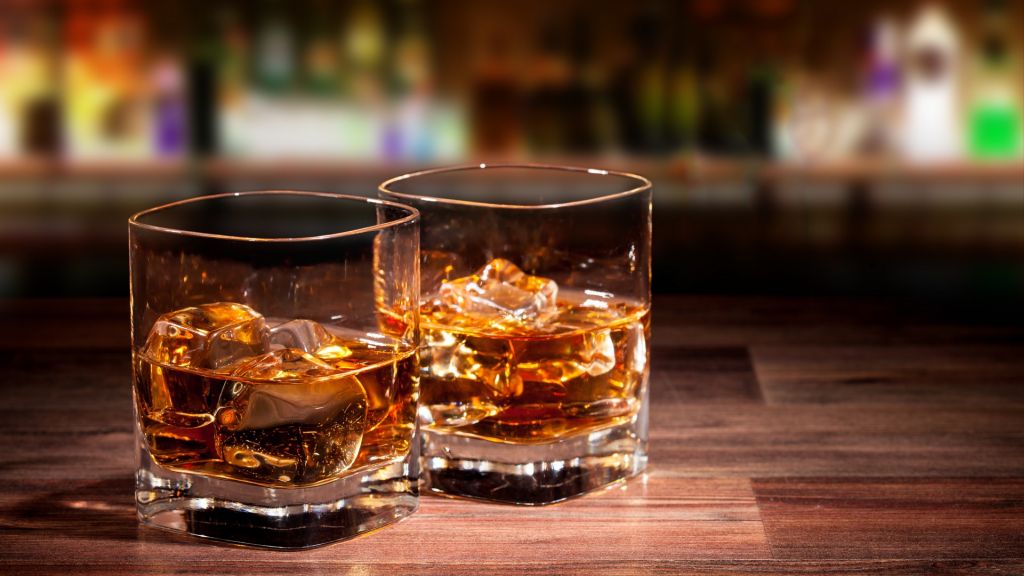The global beverage landscape has undergone a dramatic transformation. As more people prioritize health, mindfulness, and inclusivity, the demand for alcohol-free alternatives has surged. While non-alcoholic beers and wines have already found their footing, a new frontier is emerging: non-alcoholic whiskey.
Once considered an impossible feat due to whiskey’s complex character and maturation process, today’s innovations have brought non-alcoholic versions closer than ever to the real thing. But can this alcohol-free spirit truly become the future of drinking?
The Rise of Non-Alcoholic Spirits
Driven by a cultural shift toward wellness and moderation, the “sober curious” movement is gaining traction. Consumers—particularly millennials and Gen Z—are reducing alcohol intake without necessarily giving up the drinking experience altogether. Enter non-alcoholic spirits, a category that replicates the flavor, aroma, and ritual of traditional spirits without the alcohol.
Brands like Lyre’s, Ritual Zero Proof, Monday, and Free Spirits are pioneering alcohol-free alternatives to gin, rum, tequila, and whiskey. These products promise the complexity of the originals, making them suitable for classic cocktails or sipped neat, minus the buzz and the hangover.
What is Non-Alcoholic Whiskey?
Non-alcoholic whiskey is typically made using botanical extracts, distillation techniques, and flavor science to mimic the smoky, woody, spicy, and caramel-like flavors of real whiskey. Some brands use natural ingredients such as charred wood, spices, or barley essence to recreate whiskey’s flavor profile. Others incorporate proprietary blends to deliver the aroma and mouthfeel consumers expect.
Unlike traditional whiskey, which must be aged in barrels for years and contain at least 40% alcohol by volume (ABV), non-alcoholic whiskey contains little to no alcohol (generally below 0.5% ABV). While this removes the intoxicating element, it also challenges producers to compensate for the depth and bite that alcohol contributes to the whiskey experience.
Why People Are Choosing Non-Alcoholic Whiskey
1. Health and Wellness
The health implications of alcohol are well-documented, from liver damage and sleep disruption to mental health effects. Non-alcoholic wine provides a flavorful alternative that aligns with healthier living. It’s often lower in calories, sugar, and carbs than alcoholic versions, making it appealing to those on specific diets or fitness regimens.
2. Mindful Drinking and Sobriety
People are increasingly mindful of their alcohol intake, whether for temporary detoxes, mental clarity, or long-term sobriety. Whiskey offers a way to participate in drinking rituals, such as sipping a nightcap, enjoying a cocktail with friends, or marking an occasion, without compromising personal goals or values.
3. Social Inclusion
Whiskey bridges the gap between drinkers and non-drinkers in social settings. At bars, restaurants, or gatherings, those avoiding alcohol can now order a sophisticated alternative that doesn’t single them out. It promotes a more inclusive drinking culture where everyone can enjoy a crafted beverage.
4. Innovation in Mixology
For bartenders and home mixologists, non-alcoholic whiskey opens up new creative avenues. It allows for a broader range of low- or no-proof cocktails, expanding the menu for customers who want more than soda or juice. Signature drinks can now cater to both drinkers and non-drinkers with equal flair.
Challenges and Criticisms
Despite its growing popularity, whiskey faces skepticism, particularly from whiskey purists. Some common concerns include:
Authenticity of Flavor: Reproducing the deep, warming complexity of a barrel-aged whiskey without alcohol is no easy feat. Many non-alcoholic versions lack the full-bodied character, mouthfeel, or finish of traditional whiskey.
Lack of Standardization: Unlike traditional spirits, the production and labeling of whiskey aren’t tightly regulated. This can lead to inconsistencies in quality and confusion about what to expect from a product.
Price vs. Value: Some whiskeys are priced comparably to premium alcohol-based spirits, which raises questions for consumers about value, especially when the product doesn’t deliver the same strength or aging authenticity.
However, as the industry matures and technology improves, these issues are gradually being addressed. Many brands are refining their recipes, using advanced flavor extraction techniques, and investing in research to get closer to the “real” whiskey experience.
Is It Whiskey?
Technically, non-alcoholic wine isn’t legally recognized as whiskey in most regions. According to regulatory bodies like the U.S. Alcohol and Tobacco Tax and Trade Bureau (TTB) or the Scotch Whisky Association, whiskey must contain a minimum ABV and undergo specific production processes, such as distillation and aging in oak barrels.
That said, the naming convention, though controversial, functions as a shorthand for consumers. Much like “vegan cheese” or “plant-based meat,” whiskey isn’t a literal term but a reference point to communicate flavor and purpose.
Market Potential and Future Outlook
The non-alcoholic beverage market is booming. According to a report by IWSR, the global no- and low-alcohol drinks market is projected to grow by over 30% by 2026. Within this, spirits are among the fastest-growing categories.
Large beverage companies are taking notice. Major players like Diageo and Pernod Ricard have invested in alcohol-free ventures, and more non-alcoholic wine startups are emerging globally. Retailers are dedicating more shelf space to these products, and bars are crafting sophisticated alcohol-free menus to meet demand.
The Verdict: A Complement, Not a Replacement
Is non-alcoholic whiskey the future of drinking? Yes—but not in the way some might assume. Rather than replacing traditional wine, it’s complementing it. It’s not about eliminating alcohol from culture altogether, but about giving consumers choices—to drink what they want, when they want, without compromise.
For some, non-alcoholic whiskey will be a daily go-to; for others, a temporary stand-in during Dry January, pregnancy, or work functions. But its very existence reflects a broader shift toward flexibility, personalization, and respect for diverse lifestyles.
As production methods improve and public perception changes, whiskey is poised to become a lasting part of the global drinks scene. Whether you’re a whiskey connoisseur curious to experiment or a non-drinker looking for depth and ritual in your glass, one thing’s clear: the future of drinking is broader, more inclusive, and a little less boozy.





